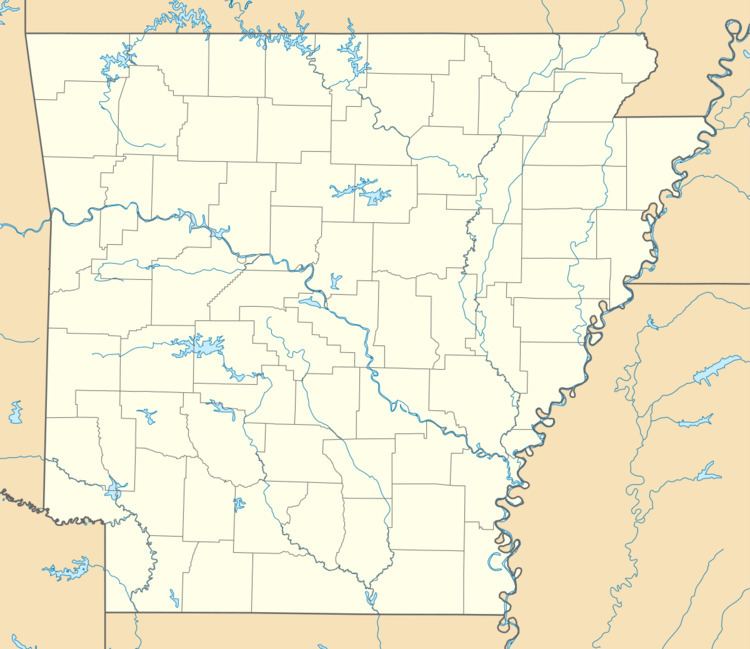- elevation 1,020 ft (311 m) Phone +1 479-761-3325 | Area 10.12 km² | |
 | ||
Address 11333 AR-74, West Fork, AR 72774, USA Hours Open today · 8AM–5PMTuesday8AM–5PMWednesday8AM–5PMThursday8AM–5PMFriday8AM–8PMSaturday8AM–8PMSunday8AM–5PMMonday8AM–5PM Management Arkansas Department of Parks and Tourism | ||
Devil s den state park arkansas travel
Devil's Den State Park is a 2,500-acre (1,000 ha) Arkansas state park in Washington County, near West Fork, Arkansas in the United States. The park was built by the Civilian Conservation Corps beginning in 1933. Devil's Den State Park is in the Lee Creek Valley in the Boston Mountains which are the southwestern part of The Ozarks. The park, with an 8 acres (3.2 ha) CCC built lake, is open for year-round recreation, including, hiking, mountain bike and equestrian trails. Devil's Den State Park also has several picnic areas, a swimming pool, cabins and camping site ranging from modern to primitive. Fossils of coral and crinoids can be found along the banks and within Lee Creek at Devil's Den State Park.
Contents
- Devil s den state park arkansas travel
- HistoryEdit
- GeologyEdit
- Cabins and campingEdit
- TrailsEdit
- Closure of CavesEdit
- References
HistoryEdit
Devil's Den State Park protects the largest sandstone crevice area in the United States. The park is in the Lee Creek Valley. The valley is littered with numerous sandstone caves, bluffs, ravines, rock shelters and crevices that provided an excellent hiding place for outlaws on the Butterfield Stage Line from 1858 until the beginning of the American Civil War in 1861. With the onset of the war the rocky area was used by bands of Confederate guerillas as a hide out and staging area for conducting raids on the Union Army's supply lines as well as civilian targets. The roads of the Butterfield State Line were also used by regular troops during the Civil War. Confederate and Union forces used the road during the Battle of Prairie Grove and for the Raid on Van Buren. The former town of Anna is contained within the park. It was destroyed by a flood in 1893. All that remains of the town is a cemetery, a well, and some foundations. The remnants of Anna can be seen along the Butterfield Hiking Trail near Junction Camp.
Lee Creek Valley was identified during the Great Depression as a site for a state park. Construction on the park began in 1933. Devil's Den State Park was built by young men working for the Civilian Conservation Corps which was established during the presidency of Franklin D. Roosevelt to provide work for unemployed young men from throughout the United States. The young men of the CCC lived in military style barracks and constructed many of the recreational facilities at the park, including pavilions, trails and the dam and spillway on Lee Creek that forms Lake Devil. The park underwent an extensive renovation in the 1970s when the CCC built structures were refurbished. Devil's Den State Park is recognized as one of the best preserved CCC projects in the United States. It was listed on the National Register of Historic Places in 1994 for its CCC-related Rustic architecture.
GeologyEdit
Devil's Den State Park is in the Lee Creek Valley of the Boston Mountains which are part of The Ozarks. The area is a high and deeply dissected plateau in northern Arkansas and eastern Oklahoma. The rocks of the region are essentially little disturbed, flat-lying sedimentary layers of the Paleozoic age. The highest ridges and peaks are capped by Pennsylvanian sandstone and shale. The deeply eroded valleys are cut into Mississippian limestones and below that layer Ordovician dolomites.
The caves, ravines and crevices were partly formed by slippage in sandstone formations. The Devil's Ice Box, one of the most visited caves in the park, is named for the cool air that rushes out of the cave. Air enters the cave at a point higher on the mountainside and is cooled as it passes through the mountain to the mouth of the cave.
Cabins and campingEdit
The park features 17 full-service cabins and 143 camp sites. The cabins are along Lee Creek. All are "rustic" with fully equipped kitchens plus heating and air-conditioning. The cabins, with stone fireplaces, are open year round. Devil's Den State Park is home to 146 campsites of various nature. Many of the campsites have electric hookups and running water. Others are little more than a cleared and level patch of ground on which to set up a tent.
TrailsEdit
Devil's Den State Park is home to approximately 64 miles (103 km) of trails that are open to hiking, mountain biking and horseback riding. 20 miles (32 km) of trails that are designated horse trails. Each horse trail begins and ends at the Devil's Den State Park horse camp on the southern end of the camp in the Lee Creek Valley. Two of the trails cross into neighboring Ozark National Forest.
Closure of CavesEdit
Due to the spread of White Nose Syndrome, a fungal infection caused by the Geomyces Destructans fungus in bats including the Ozark Big-Eared Bat, Indiana Bat, and Gray Myotis (Arkansas’ three endangered bats), as well as the Brown Bat and Tri-colored Bat, the park's caves have been temporarily closed to the public since April 16, 2010 to help slow its spread.
